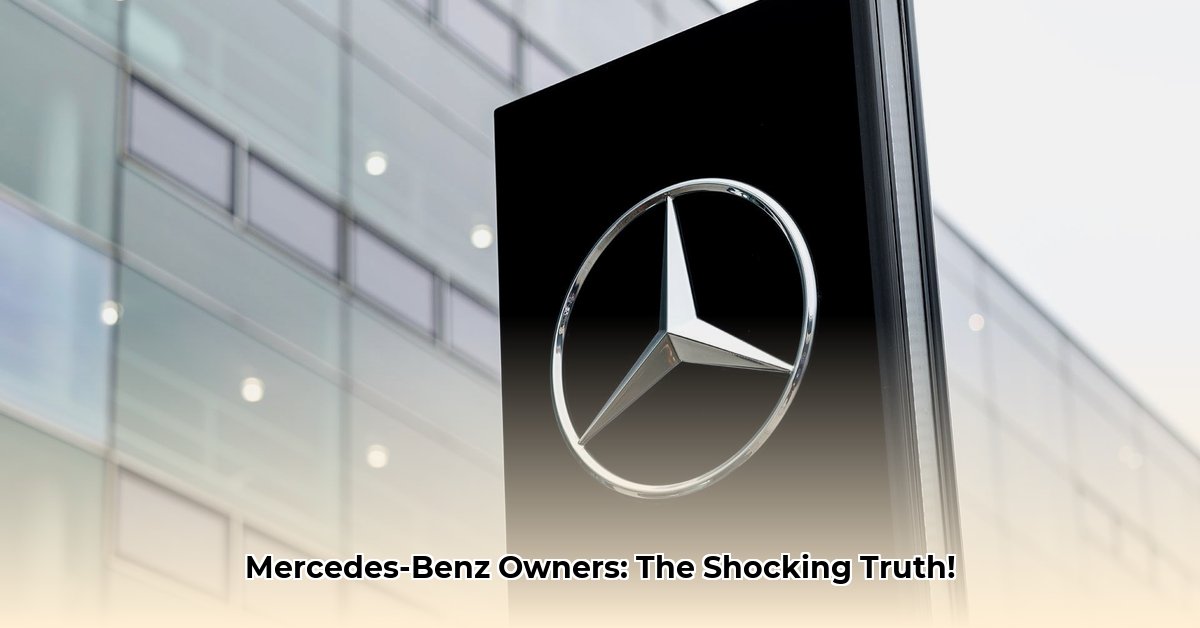Mercedes-Benz, a name synonymous with automotive luxury and innovation, operates under a complex ownership structure and faces a dynamic global landscape. This article delves into the key stakeholders, manufacturing footprint, and electric vehicle (EV) strategy that define Mercedes-Benz in 2025.
Deconstructing the Ownership: Beyond the Three-Pointed Star
While the iconic three-pointed star represents a unified brand, Mercedes-Benz’s ownership is multifaceted. Mercedes-Benz Group AG, a publicly traded entity, distributes ownership across a diverse range of investors. Understanding these stakeholders is crucial for comprehending the forces shaping the company’s trajectory.
Beijing Automotive Group Co., Ltd. (BAIC Group): This Chinese automotive giant holds a significant stake (approximately 9.98% of voting rights) in Mercedes-Benz Group AG. This strategic partnership provides Mercedes-Benz with a strong foothold in the rapidly expanding Chinese market, while offering BAIC access to advanced German engineering and technology. However, it also exposes the company to the complexities of navigating geopolitical dynamics and potential trade tensions.
Geely: Founded by Li Shufu, this Chinese multinational automotive company holds a substantial stake (around 9.69%) in Mercedes-Benz Group AG through an investment arm. Geely’s investment further strengthens the Chinese influence within Mercedes-Benz, fostering potential collaborations in areas like EV development and autonomous driving technology. This partnership also presents challenges, including potential conflicts of interest and the need to balance competing market strategies.
Kuwait Investment Authority (KIA): As a sovereign wealth fund, KIA’s investment (approximately 5%) represents a long-term stake in Mercedes-Benz. This provides financial stability and underscores the global appeal of the brand. However, it also subjects the company to the scrutiny and potential influence of a governmental entity, adding another layer of complexity to its decision-making processes.
Beyond these major stakeholders, a diverse array of institutional and individual investors hold the remaining shares. This dispersed ownership structure necessitates a delicate balancing act to address the diverse, and sometimes conflicting, interests of all parties involved.
The Global Manufacturing Ecosystem: Balancing Local Needs and Global Vision
Mercedes-Benz boasts a global manufacturing network spanning five continents, from its historical roots in Germany to strategic locations in China, South Africa, Hungary, and the United States. This geographically diversified approach allows the company to tailor production to regional consumer preferences, capitalize on local expertise, and mitigate risks associated with geopolitical instability or supply chain disruptions. However, maintaining quality control, managing logistical complexities, and navigating varying regulatory landscapes across these diverse locations presents significant challenges.
Germany: Plants in Sindelfingen, Bremen, and Rastatt produce a range of models, from compact cars and SUVs to luxury sedans and EVs, demonstrating the country’s continued importance as a hub for innovation and high-quality manufacturing.
China: The Beijing Benz Automotive Co., Ltd (BBAC) facility, a joint venture with BAIC Motor, caters specifically to the Chinese market, producing extended-wheelbase versions of popular models and key EV components. This localized production helps navigate import tariffs and addresses specific consumer demands within this crucial market.
South Africa: The East London plant plays a pivotal role in producing C-Class models for both left- and right-hand drive markets, emphasizing the strategic importance of this location for global distribution.
Hungary: The Kecskemét plant showcases Mercedes-Benz’s flexible manufacturing capabilities, producing combustion engine, plug-in hybrid, and fully electric models on the same assembly line. This adaptability is critical for responding to the evolving automotive landscape.
United States: The Tuscaloosa, Alabama plant focuses on SUV production, including the GLE, GLS, and Maybach GLS, as well as the electric EQS and EQE SUVs, catering to the growing demand for luxury SUVs and EVs in the North American market.
This intricate global network, while offering numerous advantages, necessitates sophisticated supply chain management, consistent quality control, and a deep understanding of diverse market dynamics.
Electrifying the Future: Navigating the EV Revolution
Mercedes-Benz has committed substantial financial resources (€40 billion by 2030) to its ambitious EV strategy, encompassing research and development, infrastructure development, and battery production. This significant investment underscores the company’s commitment to shaping the future of mobility and competing in the rapidly evolving EV market. However, this transition presents significant challenges and opportunities.
Securing Battery Materials: The EV industry faces intense competition for critical battery materials, necessitating strategic partnerships and vertical integration to ensure a reliable supply chain. Mercedes-Benz is actively exploring direct investments in battery production and diversification of sourcing to mitigate these risks.
Conquering the Chinese EV Market: China represents both a massive opportunity and a significant challenge for Mercedes-Benz. The company must navigate the complex regulatory landscape, intense competition from domestic EV manufacturers, and evolving consumer preferences to succeed in this crucial market.
Navigating EU Regulations: Stringent emission standards within the European Union create both pressure and incentives for Mercedes-Benz. While compliance requires substantial investment, it also strengthens the demand for EVs, creating a favorable market environment. The company must leverage these regulations to accelerate its EV adoption and gain a competitive advantage.
Preserving Brand Legacy: Maintaining the prestigious brand image of Mercedes-Benz in the EV era is paramount. The company must ensure that its EVs embody the same level of luxury, performance, and innovation that define its traditional combustion engine vehicles.
Managing Financial Performance: The transition to EVs requires significant upfront investment, potentially impacting short-term profitability. Mercedes-Benz must carefully balance the need to invest in the future with the need to maintain financial stability in the present.
Mercedes-Benz recognizes the complexities of managing parallel production for both combustion engines and EVs during this transitional phase. This dual approach increases costs but allows the company to cater to a broader market while gradually shifting its focus towards full electrification. The company’s success will depend on its ability to navigate these complex challenges, capitalize on emerging opportunities, and maintain its position as a leader in the automotive industry.










